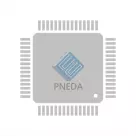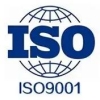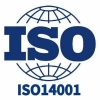Realize industrial automation, magnetostriction sensor power valve control

In the area of modern industrial automation, companies are particularly focused on precise control and efficient operation. Among them, valve control is a key link in fluid system management, and its importance is self-evident. In order to make the valve operation more accurate and more reliable, magnetostriction sensors, a new type of measurement equipment, are now getting more and more attention. Here is a good talk about how the magnetostriction sensor is applied in valve control, and what are the benefits.
Let's start with how magnetostriction sensors work. It is a new type of sensor that works by magnetic field and stretching effect. In simple terms, it is a thin metal rod, usually made of stainless steel, with a magnetic coil embedded in it. When a magnetic field is applied to the metal rod, the metal will expand and change along the direction of the coil, which will produce an electrical signal, which is proportional to the displacement of the metal rod. With this electrical signal, it can be used to detect the position, and it can also engage in feedback control, and the measurement accuracy is high.
And look at the high-precision displacement measurement here. In the valve control system, in order to accurately control the fluid flow, it is necessary to know the opening state of the valve in real time. Magnetostriction sensor is powerful in that it can provide submillimeter displacement accuracy, and can feed back the switching state of the valve in real time and accurately. With such a high precision measurement capability, the plant can be carefully controlled in those complex fluid management systems, and the measurement error will not cause production accidents.
For example, in key industries such as chemical and pharmaceutical, power and energy, the accuracy of process control is directly related to product quality and production safety. If the magnetostrictive sensor is introduced, the company can always monitor the operating status of the valve without disrupting the production rhythm, so that the operating parameters can be adjusted in time and the production process can be optimized better.
There is also the aspect of improving the response speed of the system. Traditional valve control systems, generally rely on mechanical contact or analog signals, the response speed is slow. Magnetostriction sensor is different, it uses digital signal transmission technology, can transmit data in real time, and the response speed of the system is improved a lot. If the system receives a signal that the valve position is changing, the control system can react in milliseconds and adjust the valve opening quickly. This is especially important in industrial applications that require rapid response.
Let's talk about anti-jamming and durability. In the industrial environment, the valve control system often has to face the harsh conditions of high temperature, high pressure and vibration, so the requirement for the sensor is to have strong anti-interference ability. Magnetostriction sensors use non-contact measurement technology, which can effectively block external electromagnetic interference, and no mechanical friction, less wear. In addition, the sensor is generally made of high-strength materials, chemical corrosion resistance and water resistance are good, and can work steadily for a long time in complex industrial environments. In this way, compared with the traditional valve control sensor, the performance of the magnetostrictive sensor is more reliable, the maintenance cost of the equipment can be reduced, the service life can be extended, and the operation efficiency of the enterprise is naturally greatly improved.
Now companies like devices that can be integrated with multiple functions, and magnetostriction sensors can also do this. In addition to the most basic displacement measurement, today's magnetostrictive sensors can also be linked to other industrial automation equipment. For example, it can be deeply integrated with PLC (Programmable logic controller) or DCS (distributed control system), supporting data sharing and real-time monitoring. In such an integration, the intelligent level of equipment, but also to achieve high-level supply and demand coordination, scheduling optimization and resource allocation, production efficiency can be further improved.
In the context of Industry 4.0, data acquisition and intelligent analysis have become a new trend to improve productivity. While collecting valve position data, the magnetostrictive sensor can also be connected to the cloud system to upload the data for analysis in real time. Through big data analysis, enterprises can be more clear about the operating status of equipment, but also to predict failures, early maintenance, will not be due to downtime caused by loss. Moreover, the data collected by the sensor can provide a basis for valve operation optimization, analyze the performance of the valve under different working conditions, and enterprises can adjust the operation strategy to improve the system energy efficiency.
Magnetostriction sensors also have the obvious benefit of being simple to install and maintain. Because it is non-contact measurement, the user does not have to deal with those complicated steps when installing. The equipment can be attached to the existing valve system with a simple fixing bracket, saving time and manpower. In addition, its durability is good, the maintenance cycle is longer, the number of daily inspections can be less, and the enterprise can save human resources and concentrate on the core business.
The advantages of magnetostrictive sensors make it widely used in all walks of life. Whether it is the petrochemical industry, pharmaceutical industry, food processing, water treatment, HVAC, it can provide great valve control solutions. Its design is flexible, powerful, can meet the needs of a variety of complex scenarios, and can help enterprises achieve the goal of automation in different industry environments.
Through the combination of modern industrial automation technology, magnetostriction sensors have been promoting the technological innovation of valve control systems, so that the production efficiency and safety of enterprises have been improved, and continue to expand the application field, adding a lot of new vitality to the automation process in all walks of life.
The Products You May Be Interested In
 |
CAR0812FPB-Z01A | AC/DC CONVERTER 12V 850W | 8856 More on Order |
 |
XSC003A5F91Z | DC DC CONVERTER | 7182 More on Order |
 |
QRW025A0G641Z | DC DC CONVERTER 2.5V 63W | 5166 More on Order |
 |
EHHD020A0F64Z | DC DC CONVERTER 3.3V 66W | 3762 More on Order |
 |
EVK011A0B41Z | DC DC CONVERTER 12V 132W | 8874 More on Order |
 |
QW020A0Y1Z | DC DC CONVERTER 1.8V 36W | 3618 More on Order |
 |
ATH025A0X3Z | DC DC CONVERTER 0.8-3.6V 90W | 2538 More on Order |
 |
QW030CL1 | DC DC CONVERTER +/-15V 30W | 3330 More on Order |
 |
QRW010A0B1 | DC DC CONVERTER 12V 120W | 7254 More on Order |
 |
QBK020A0B1 | DC DC CONVERTER 12V 240W | 6084 More on Order |
 |
NH050G-L | DC DC CONVERTER 2.5V 37W | 8730 More on Order |
 |
MH005CL | DC DC CONVERTER +/-15V 5W | 6732 More on Order |
 |
ME005A | DC DC CONVERTER 5V 5W | 8730 More on Order |
 |
LW010A9 | DC DC CONVERTER 5V 10W | 2196 More on Order |
 |
EQW025A0P1 | DC DC CONVERTER 1.2V 30W | 3150 More on Order |
 |
QBVW033A0B1-HZ | DC DC CONVERTER 12V 400W | 5202 More on Order |
 |
EVW020A0S6R041-HZ | DC DC CONVERTER 6V 120W | 3060 More on Order |
 |
EHHD010A0B641-HZ | DC DC CONVERTER 12V | 6318 More on Order |
 |
UVT020A0X43-SRZ | DC DC CONVERTER 0.45-5.5V 110W | 6876 More on Order |
 |
QSDW050A0B41-PHZ | 36-75VIN, 50A/12V OUT, 600W WITH | 4068 More on Order |
 |
QBVW033A0B41-HZ | DC DC CONVERTER 12V 400W | 38 More on Order |
 |
EHHD015A0A41-HZ | DC DC CONVERTER 5V 75W | 12936 More on Order |
 |
KHHD015A0F41Z | DC DC CONVERTER 3.3V 50W | 16644 More on Order |
 |
PVX006A0X3-SRZ | DC DC CONVERTER 0.6-5.5V 33W | 0 More on Order |









